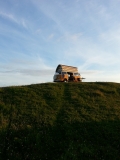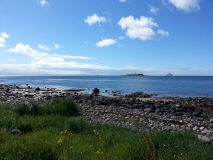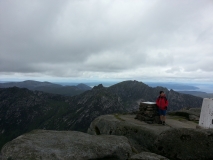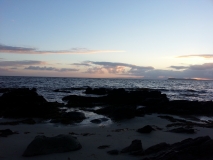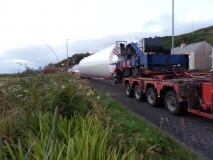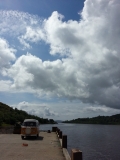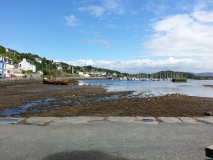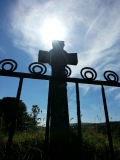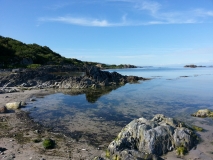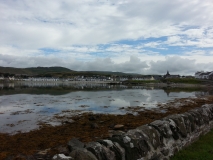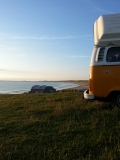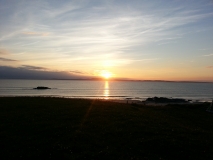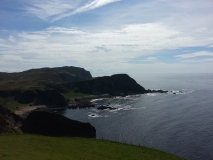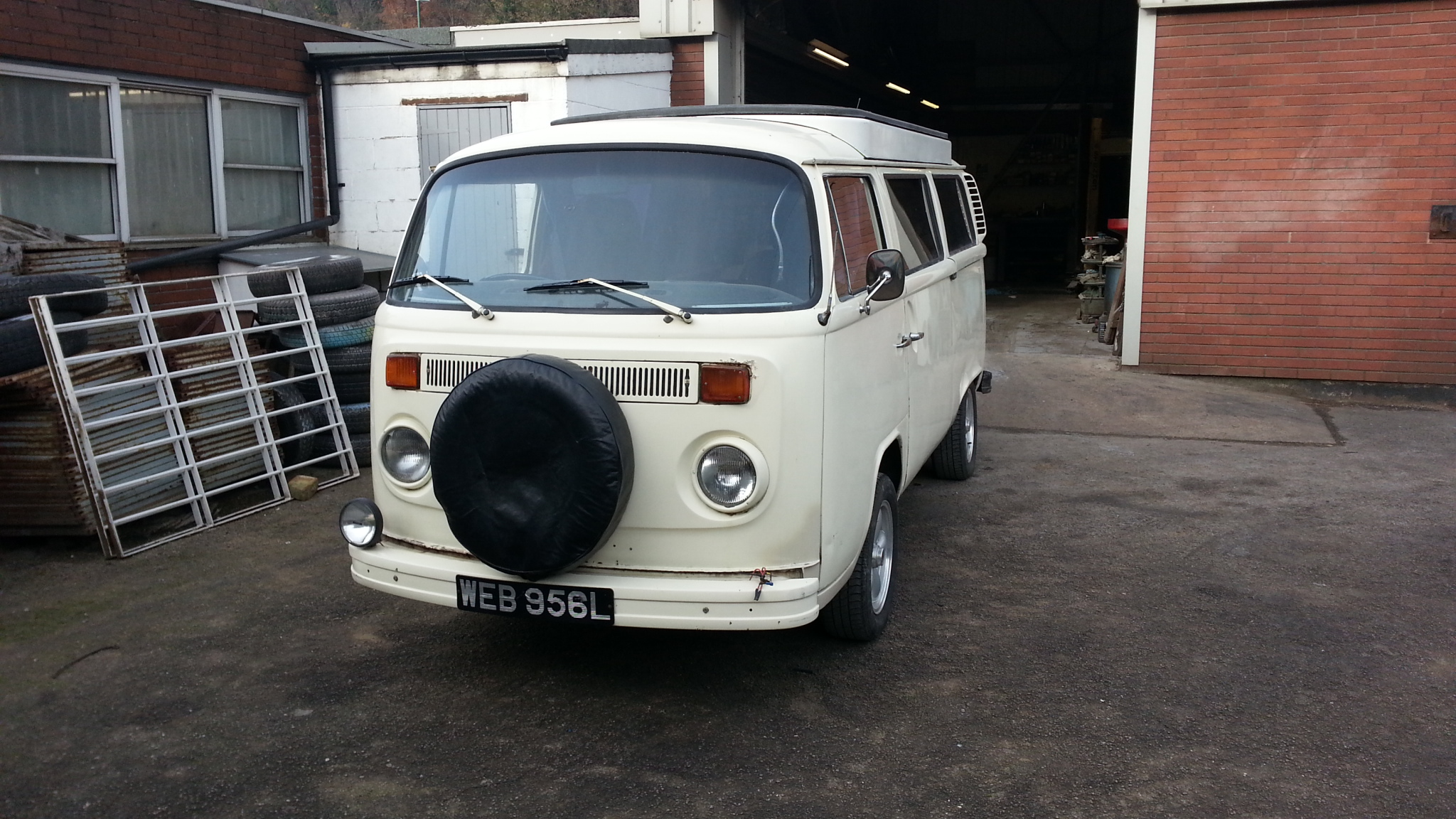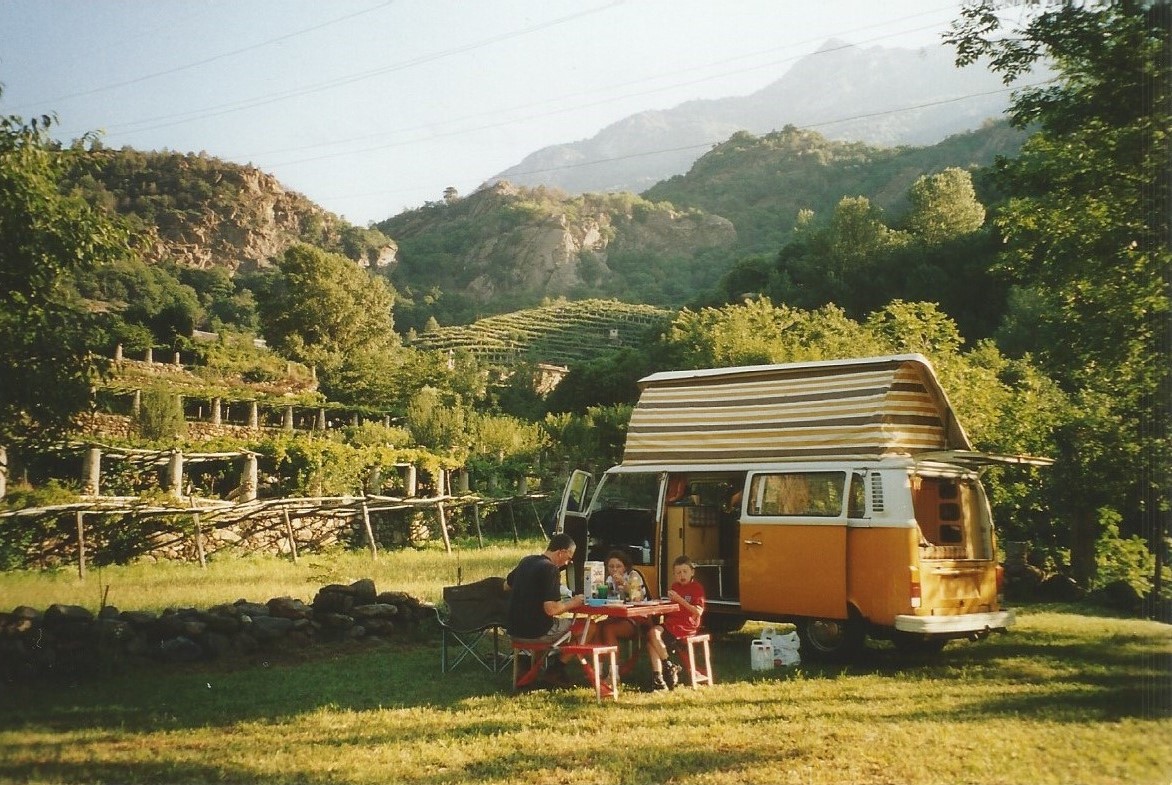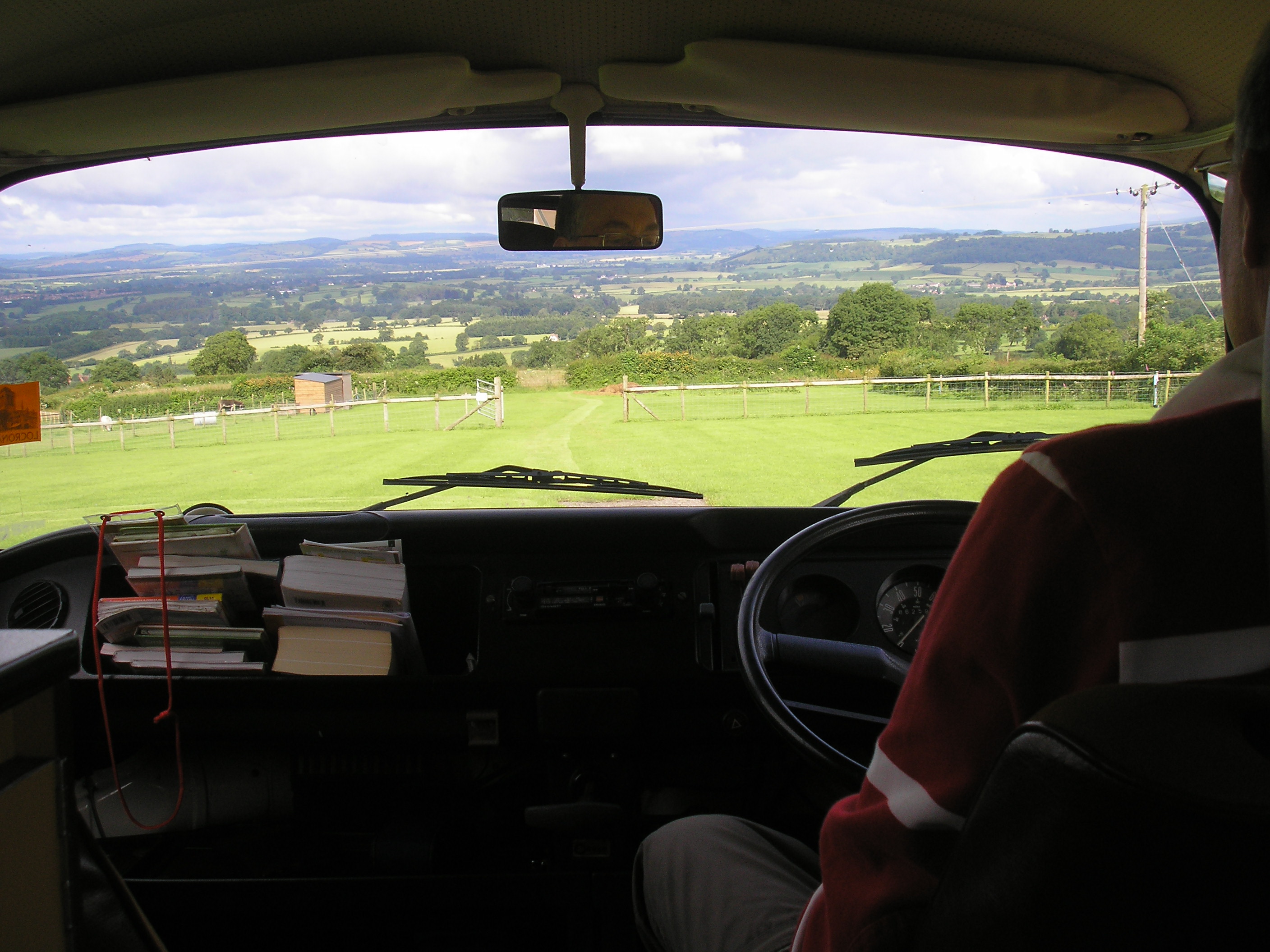It seems amazing, given our love of remote and rugged countryside, that we had not ventured into Scotland with the camper until 2014. As to be expected, we were not disappointed and it is an exciting prospect that there is so much more to be discovered and explored.
And so, armed with our usual provisions, the Cool Camping Scotland book and a vague plan to explore some of the Western Isles we trundled off up the M6.
We made an overnight stop at a site in Lockerbie before heading over to the coast to get the Calmac ferry over to Arran. En route, we spotted an unassuming sign to “Narrow Gauge Railway” and given Andy’s interest we had to follow the sign. This was one of those memorable and unexpected detours that you can only do in camper van trips where there are no deadlines and no destinations, where the joy is in the journey and what you find along the way.
Our detour took us through a wide bottomed and bleak valley with a fast-flowing stream running through, where there were an unexpected number of people wild camping. It took us a while to realise that they were panning for gold! I have subsequently looked this up online to find that in 2015 someone found a nugget of gold there worth £10,000. As we climbed out of the valley, the mist closed in and we eventually reached the Leadhills and Wanlockhead Railway which we later learnt is Britain’s highest narrow gauge adhesion railway, reaching 1,498 feet above sea level. On this occasion we did not linger given that visibility was about 20 feet and it was freezing cold – one for another day.
The ferry journey from Ardrossan to Brodick on Arran was straightforward and we headed for an impressive campsite featured in the Cool Camping Scotland book, Seal Shore in Kildonan on the south west corner of the island
As we were to learn as the trip progressed, a coastal breeze is one of the best ways to avoid the dreaded Scottish midges. Seal Shore provided all we needed with a pub onsite serving good food, and an uninterrupted view out to sea. We were directed to a prime pitch on the shore line, alongside three other bay window campers. The volcanic island of Aisla Craig (the granite from which is used to make curling stones) rose from the sea in front of us and in the morning an otter appeared on the rocks and remained there for approximately 15 minutes preening itself.
The walk to Goatfell from Cladach was very impressive, although I recall being so exhausted at the end of the walk which had involved a lot of clambering, that we did not even explore the options for a drink at the end. Pretty surprising given the proximity of the Arran Brewery in Cladach.
However, we made up for this the following day by doing a distillery tour of the Arran Distillery in Lochranza: the perfect way to spend a rainy Scottish day and well placed for our onward ferry across to Kintyre.
There is not exactly a lot to do on the Kintyre peninsula on a bleak and rainy day, so we chose to trundle down the minor single-track road with passing places that runs down the east of the peninsula to Campbeltown, where Andy eagerly sought to identify any remains of the Campbeltown to Machrihanish railway. Due to the weather we did not venture as far as the famous Mull of Kintyre, although on a different day I dare say this would have been more appealing.
We returned up the altogether more major route on the west side of the peninsula to another stunning camping location with an uninterrupted view out to sea.
Although the site was close to the road, we were relatively undisturbed by the traffic except for when this unusual convoy passed which we eventually realised was the constituent parts of a wind turbine.
The town of Tarbert was a pleasant place to spend the morning before catching another ferry across to the island of Islay.
We have come across several places with the name Tarbert in Scotland. It is said to come from the Norse meaning “draw boat” and was given to places where the Vikings would have dragged their longboats across a narrow strip of land to avoid sailing all the way around a peninsula.
The sailing across from Kennacraig just south of Tarbert to Port Askcraig on Islay was beautiful with views back to the mainland as well as to the islands of Islay and Jura.
Islay is a whiskey-lovers paradise, with eight distilleries on this island of 239 square miles. The Laphroaig, Lagvulin and Ardbeg distilleries lie in very close proximity at the islands southern tip and some visitors like to visit all three in one sitting, sampling their wares, as we found out when a group of Germans hitched a short lift with us following their visit. They were delighted to be picked up in an old VW, although conversation was pretty difficult given their level of inebriation.
The dead-end road beyond the distilleries is delightful to explore, with its contoured coastline and ancient remains. And here we came across a cool box, packed with homemade cakes and cookies with an honesty box for your payment!
We did not feel the need to visit all the distilleries on the island, but chose to visit Bruichladdich.The tour was really interesting and informal, and the distillery had a friendly feel. They were very generous in the samples and tastings provided, doubtless all designed to encourage you to make your purchases in the shop at the end of the tour.
The towns on Islay such as Port Ellen, Port Askraig and Bowmore are charming, with a lot of whitewashed buildings, and shops selling local crafts and produce
Once again, a stunning coastal campsite was found at Kintra Farm where pitches could be chosen among the dunes with easy access to a beautiful stretch of beach, the perfect setting for a stroll in the early morning, or a to take a tot of the aforementioned whiskey as the sun was setting.
Our return ferry journey took us from Port Ellen back to Tarbert and from there we had to drive north along the shores of Loch Fyne, across to another Tarbert (between Loch Long and Loch Lomond), before heading south along Loch Lomond and through Glasgow for the long slog back down to the midlands.
Our exploration of Arran, Kintyre and Islay whetted our appetite for further exploration of Scotland, its remote locations, deserted beaches, stunning campsites and delicious malt whiskies!

